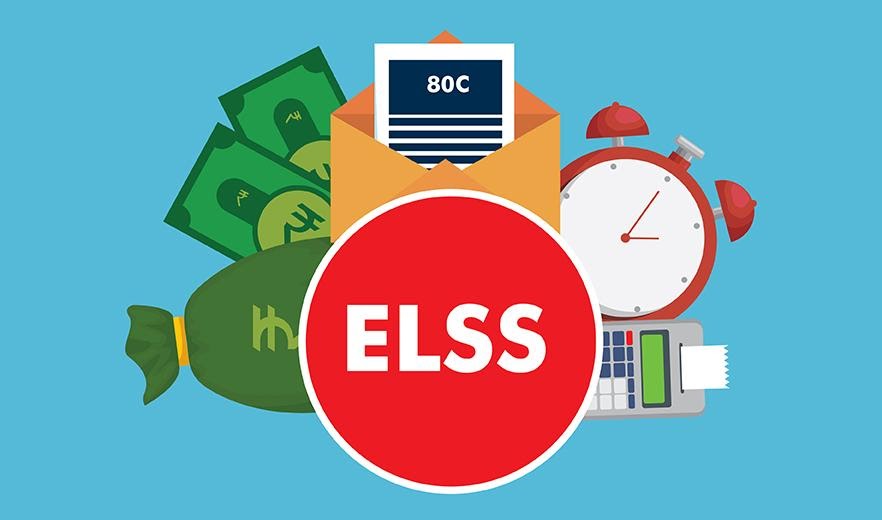Today, there are myriad investment opportunities that you can use to generate extra wealth, get better returns, and save taxes in India. However, most of the investment schemes that provide returns are taxed as per various provisions of the Income Tax Act rules in India. ELSS is one of the best investment choices as they are regarded as tax-saving equity mutual funds. So if you are here to save taxes and understand what is ELSS scheme? Let’s get started without any further delay.
What is ELSS Scheme?
These are diversified equity mutual fund schemes that enjoy tax benefits under Section 80C of The Income Tax Act 1961. ELSS funds are essentially diversified equity mutual fund schemes that invest in equity and equity-related securities across sectors and market capitalization segments.
Though ELSS funds are subject to market risks, historical data shows that equity has been the best performing asset class over the long investment horizon. An investor can invest in ELSS either in a lump sum or through Systematic Investment Plans (SIP).
What is ELSS Mutual Fund? (Under ELSS Tax Saving).
Equity-linked Savings Scheme commonly referred to as ELSS, is one of the types of mutual funds which can be used for tax-saving purposes as per the provisions under Section 80C of the Income Tax Act, 1961 in India. This type of mutual fund is typically a diversified, open-ended equity fund that comes with a three-year lock-in period. So, apart from wealth creation, one can also enjoy tax benefits.
Since ELSS is covered under the Section 80 C provisions, one can claim tax deductions of up to 1,50,000 a year. Any amount above 1,50,000 a year will not be considered under the Section 80 C provision. In addition, you can make savings of Rs 46,800 as well.
ELSS mutual funds are basically equity funds where a major allocation of assets is invested into equity or equity-related instruments. The striking feature of ELSS is that it has the shortest lock-in period when compared to other investment options like PPF, NSC, etc. As a result, ELSS tends to be more liquid as compared to any other Section 80 C investment option.
Also, ELSS is the only Section 80 C investment option that has the potential to offer inflation-beating returns. Investors across the tax bracket, more importantly, those in the higher tax bracket, may invest in these funds to save taxes.
This is because the long-term capital gain of up to Rs.1 lakh is tax-free. Moreover, gains exceeding Rs. 1 lakh are taxed at the rate of 10 percent without the benefit of indexation. This makes the ELSS option a very tax-efficient investment.
Investors can choose between lump sum and SIP mode of investment. Since ELSS is an equity offering, it is advisable to opt for SIP as it allows investors to spread there investment throughout the year, thereby reducing the risk to capital and also disciplined about one’s investment.
In terms of the risks involved, since ELSS is an equity mutual fund there is always a market-linked risk. Just like any other equity mutual fund, over the short term, the investment could be volatile but over the long term, it will tend to even out. Hence, if you are investing in ELSS, make it a part of long-term holdings in your portfolio. In the past years, many taxpayers have started to utilize ELSS fund schemes to get tax benefits.
As this financial year comes to an end, if you are seeking a good tax-saving investment option, ELSS is an interesting mode to consider. An investor can also use this fund to meet long-term financial goals like a child’s education, marriage, and retirement. More than fund selection, what is of most importance is remaining invested for the long horizon. Last but the least, when in doubt, consult your financial planner.
How to Invest in ELSS?
To invest in ELSS, you must undergo KYC verification first. This can be done at any authorized KRAs. You will need to submit a photo, PAN card details, and address proof in the prescribed format. Once the verification process is complete you can make the investment in ELSS from your preferred platform.
For more information and advice on ELSS funds, there benefits, and other investments, contact experts at GEPL Capital or visit here
ELSS Mutual Fund Tax Benefit
- Some of the major benefits of ELSS mutual fund include:
- Dual benefit – Save tax as well as create wealth
- Higher returns than other 80C investment options
- Tax Exemption – Up to 1.5 lakh u/s 80C
- Tax Saving – Up to 46,800* in a year
- Shortest Lock-in period
- Low minimum investment as low as Rs.500
- Inflation beating returns over the long term
- ELSS funds are invested across different sectors in a diversified manner. This enables you to add diversification to the investment portfolio.
5 Key characteristics of ELSS schemes are as follows:
- ELSS Mutual Funds are also known as Tax Saver Funds as investors can claim a deduction of up to Rs 150,000 in a financial year from there taxable income by investing in these schemes.
- Equity Linked Savings Schemes (ELSS) have a lock-in period of 3 years, i.e., you cannot redeem your ELSS units before 3 years from the date of purchase.
- ELSS schemes have the lowest lock-in period of 3 years amongst other tax saving instruments (Tax saving FD have 5 years & PPF have 5 years lock-in period).
- ELSS mutual funds have the potential to offer superior returns than other tax-saving instruments such as PPF or Tax saving FD. ELSS schemes category has generated CAGR returns of 16%, 13% 15% respectively over a period of 3, 5, 10 years as compared to around 7% for PPF 6% for tax saving FD. Thus, ELSS schemes not only help in saving tax but can generate wealth over a long investment horizon.
- If you are investing in ELSS through a Systematic Investment Plan (SIP), each installment will be locked in for 3 years from there respective investment dates.
Best ELSS Schemes to invest in this tax-saving season
If you want to invest or want to know more about how to save tax our experts are there to help you get started you just click here or to explore more investment opportunities click here.








.png)








